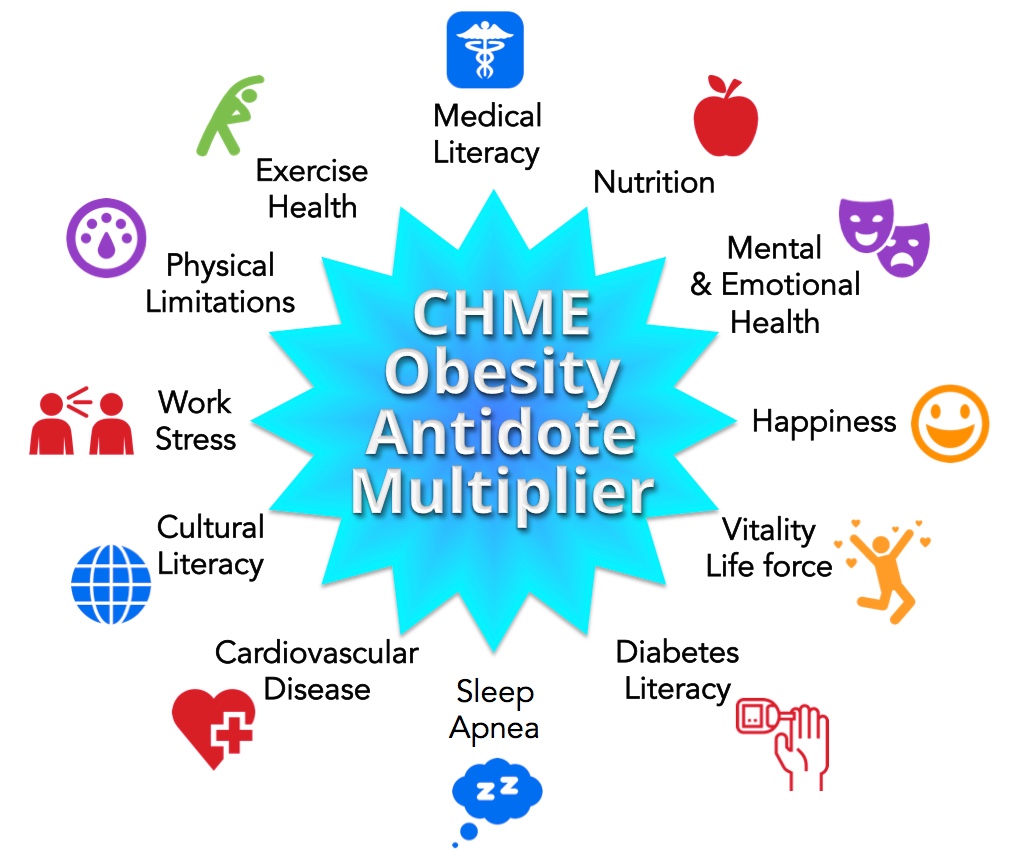
Self-Care for Obesity
According to the T. H. Chan School of Public Health the cost to the U.S. of obesity in 2005 was $190 billion. In 2014 it was $325 billion and by 2022 it is projected to reach $555 billion. The annual global costs of obesity are estimated to exceed $1.2 trillion beginning in 20221. The battle is uphill and until today no viable solution has been in sight. However, this challenge also presents a unique opportunity to shift course and to create a “Compound Community Health Multiplier.”
The Compound Community Multiplier
The above diagram illustrates the multiple connections to obesity. The BHT Protocol begins with making available curated evidenced based medical practices. This is achieved by offering on the CHME a simple description in plain language of the key elements, in a manner and style that is, easy to comprehend and apply. An example: how to manage obesity and its relationship to other chronic conditions. A user simply clicks this category and up comes a well-presented introduction to the best, evidenced based, medical practices. After understanding the basics, the user is guided to several other closely related categories on the diagram—for example, Nutrition, Exercise, Emotions, and Culture. Simply making these connections induces a Stage 1 multiplier effect. It is the beginning of creating a “strategic leverage pathway” for users. Introducing the 10 Essential Moves compounds the Multiplier, which induces key behavioral change.
The Success Points program rewards such behaviors and further increases the multiplier effect. When this new knowledge is passed on (paid forward) to others, the rewards increase, and benefits extend to increasing larger circles within the local community. The interaction among the global users of the CHME significantly amplifies the process and engenders a sustainable community wide compounding multiplier effect.
Partners in Health: Shifting Physician/Patient Engagement
Empowering users to become health literate will induce a positive shift in the doctor/patient relationship toward a direction that is now widely welcomed by many parts of the medical establishment. Most physicians graduating from western medical schools are trained to examine patients and make diagnoses based on linear and vertical analysis. There is little time and few truly effective protocols to examine systemic effects. The CHME protocol enables users rapidly to understand their own health and wellness from a systems perspective. In this way patients and other users can become true partners with their health care providers.
